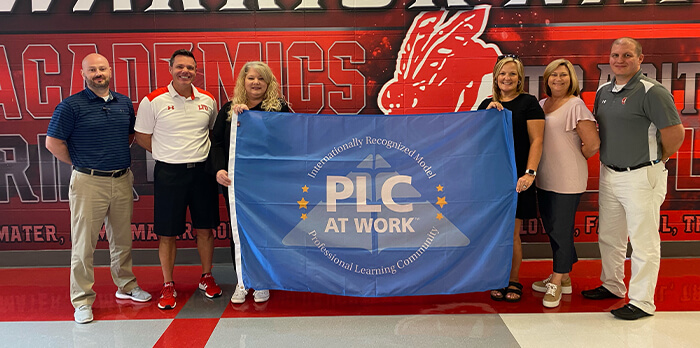DEMOGRAPHICS
11,069 Students
- 46.9% Free and reduced lunch
- 1.9% English learners
- 17.9% Special education
CATOOSA COUNTY PUBLIC SCHOOLS’ CHALLENGE
When Catoosa County Public Schools received approval to become a charter system, school and district leaders were excited about the flexibility granted by the new status. They also realized the level of accountability would change. At the same time, the school district was notified that, due to the high number of students identified for special education services, it was being placed on the “Disproportionate List.”
Collaboration between district leaders began a new journey. During the charter system application process, strong strategic planning had been completed, but general and special education leaders now needed to delve deeper into the data to determine immediate areas of concern. While student achievement in English language arts and mathematics both needed attention, reading achievement, especially at the elementary level, surfaced as the top priority.
“We were the lowest-ranked College and Career Ready Performance Index (CCRPI) school in north Georgia. It was a huge wake-up call.”
IMPLEMENTATION
General and special education leaders embarked on a search for proven, research-based practices. A team of four district-level leaders attended the Response to Intervention (RTI) at Work™ Institute in Dallas where the Professional Learning Communities (PLC) at Work® and RTI at Work™ processes were united. A new vision of effectively operating as a learning organization began to emerge.
“We had a lot of learning to do,” says Dr. Kim Nichols, assistant superintendent of Catoosa County Public Schools.
Changes began immediately. Administrator and academic coach meetings were redesigned to focus on building capacity among school and district leaders. Learning about the PLC at Work® process of improving student achievement became a priority. Due to the problem of overidentifying students for special education services, school and district leaders were also required to quickly learn more about effective RTI practices. Catoosa County Public Schools decided to move away from the traditional RTI model in favor of the RTI at Work™ process.
District and school leaders spent the next year studying and discussing effective PLC and RTI practices through collaborative book studies. A districtwide focus on the four guiding PLC questions became the driving force behind making changes. Emphasis on learning instead of teaching became the new filter.

Catoosa County Public Schools staff celebrate their district’s distinction as an internationally recognized Model PLC at Work®.

Catoosa educators learn from one another to improve their practice.
RESULTS
Catoosa County Public Schools earned recognition as a Model PLC District, with 12 of its 16 schools earning distinction as Model PLC Schools. The district has also received numerous awards, and its schools have been recognized for their significant gains in student achievement.
According to Dr. Nichols, the district’s shift from a focus on teaching to a focus on learning—for students and staff—has been critical to its success.
“From a district perspective, you have to be that lead learner,” advises Dr. Nichols. “You have to start with yourself. If you want to have an impact and see things in your district operate differently, then you have to be the lead learner. You have to put the time in to learn, and you cannot let up. You never get to stop learning.”
District Trend Data
WHY RTI AT WORK™?
Built upon the PLC at Work® framework, RTI at Work™ uses team structures and puts the focus on learning, collaboration, and results.

